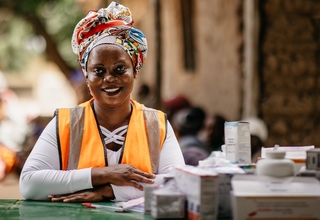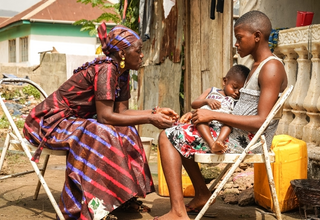Harare, April 5, 2016 – Regional experts on HIV prevention from civil society and United Nations organisations met in Harare recently to brainstorm on a draft road map to engage political leaders to drive the agenda for revitalising HIV prevention in the Eastern and Southern African (ESA) region.
ESA is the epicentre of the HIV epidemic and carries a burden of 50% of the world’s new infections.
This meeting was a platform to reach consensus and obtain buy in from countries and partners on how to reinvigorate/revitalise HIV combination prevention in the ESA region by galvanising political commitment to scale up of HIV combination prevention services. The meeting also sought to identify key players and partners to be engaged for delivering the agreed road map. Various experts from various key local and regional organizations including representatives from selected countries that shared best practices in HIV prevention attended the meeting.
Zimbabwe’s Minister of Health and Child Care (MoHCC) Dr. David Parirenyatwa convened the meeting as a follow up action to the International AIDS Conference (ICASA) which was held in Harare last year. During ICASA Government of Zimbabwe together with various partners convened a special session on leadership as a key ingredient to the achievement of global targets, particularly in HIV prevention.
This leadership session that was constituted by political leaders and leadership of the UN and CSOs reiterated the need to strengthen the prevention agenda and to come up with a roadmap/plan to engage ministers of health in the region and other leaders to support HIV prevention efforts. Sustainable Development Goal 3 seeks among other things to end the HIV epidemic by 2030 and these efforts are largely in response to this goal.
In his remarks at the meeting Dr. Parirenyatwa said it was important to gain political support within the region to scale up HIV prevention efforts within the region. He said focus on treatment and complacency at the expense of prevention had resulted an increasing number of new HIV cases within the region.
“It is very important that we drive this agenda through focused leadership, approaches and tools to revitalize HIV prevention in line with the 2020 target by UNAIDS to reduce new global cases of HIV to fewer than 500 000,”
Dr. Parirenyatwa, Zimbabwe Minister of Health
Dr. Parirenyatwa’s address also touched on key issues such as the need for new prevention thrust to include treatment adherence and demand generation for the uptake of HIV prevention services, guided by evidence of what has worked over the years. He stressed on the importance of combination HIV prevention saying no single HIV prevention tool works alone and the need for greater investment in HIV prevention as it reduces the cost of treatment.
During the meeting three countries Zimbabwe, Kenya and South Africa shared country best practices in the role of political leadership in HIV prevention.
The Kenya National AIDS Control Programme shared its experiences of how it developed and implemented a Prevention Revolution Roadmap to address the problem of HIV/AIDS. Key highlights from this experience included how political commitment was central in for example, the uptake of VMMC services and the use of high profile people in society such as the first Lady in PMTC efforts.
South Africa shared experiences of how life expectancy had increased compared to the previous years as result of increased access to treatment for the population. The Zimbabwe experience the National Aids Council shared how the Government of Zimbabwe declared AIDS a national disaster and went on to set up an “Aids Levy” to mobilise resources for the establishment of the NAC that would coordinate the response.
The “Aids levy” is a 3% levy taken from every working individual’s monthly salary and it has proved to be crucial in raising funds for the HIV/AIDS response in Zimbabwe.
UNFPA Regional Director, Dr. Julitta Onabanjo who also attended the meeting said UNFPA remained committed to addressing the problem of HIV in the region particularly for women, girls and young people.
HIV is the leading cause of death for women of reproductive age worldwide. Globally, adolescent girls and young women face gender-based inequalities, exclusion, discrimination and violence, which put them at increased risk of acquiring HIV. There were 250 000 new HIV infections among adolescents in 2013, two thirds of which were among adolescent girls.
As of 2013, 2.1 million adolescents were living with HIV.
Dr. Onabanjo said the meeting was an important first step to engage leadership within the region to step up efforts for HIV prevention. She challenged HIV/AIDS experts to come with tools to engage leadership that help maintain and sustain political commitment over a long period of time.
Other UN agencies that were represented at the meeting included the World Health Organisation, IOM and UNAIDS which was represented by its regional director, Professor Sheila Tiou.
By Bertha Shoko



